Your phone is gross, but a UV light phone sanitizer can blast bacteria out of every nook and cranny.
Our editors and experts handpick every product we feature. We may earn a commission from your purchases.Learn more.
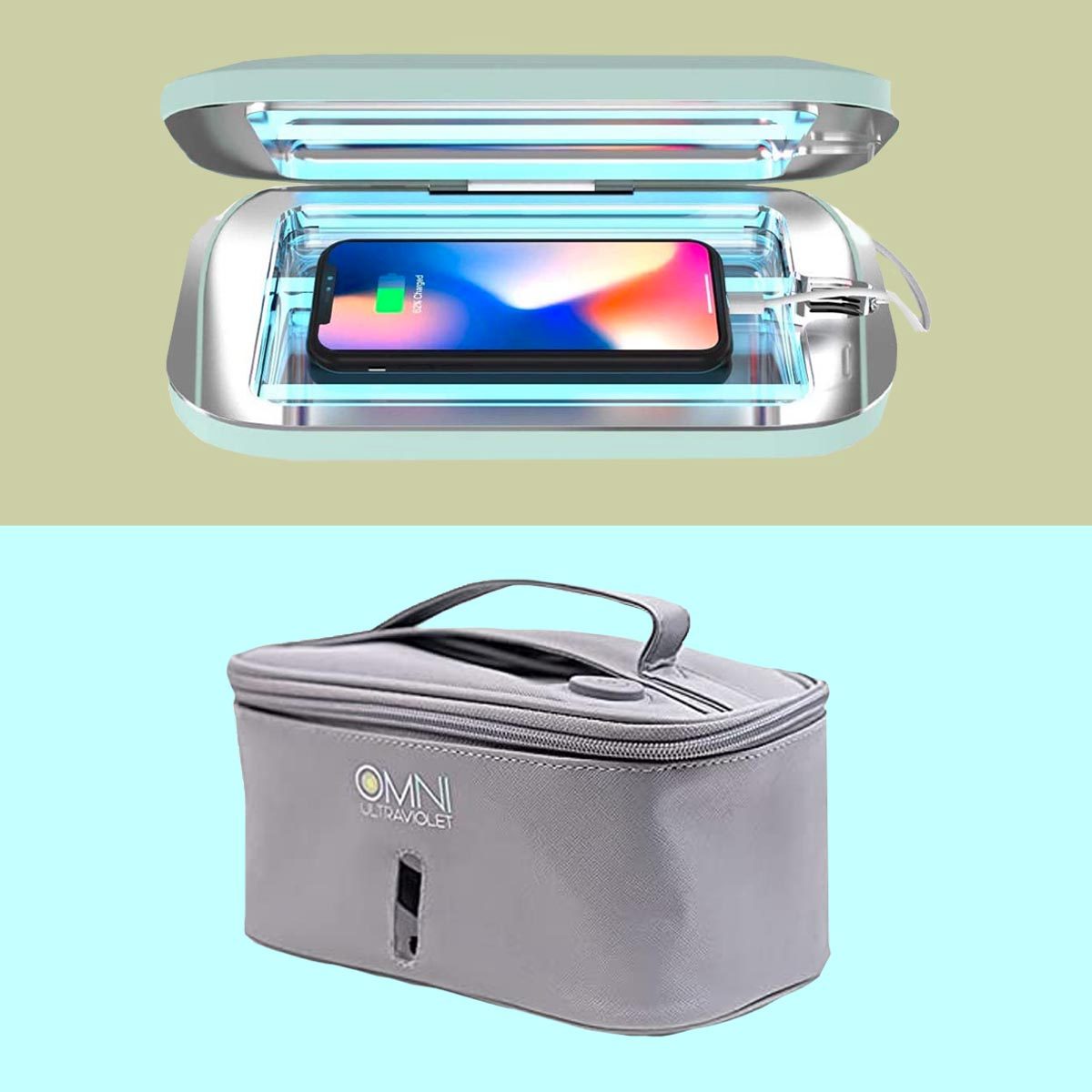

Your phone is gross, but a UV light phone sanitizer can blast bacteria out of every nook and cranny.
Our editors and experts handpick every product we feature. We may earn a commission from your purchases.Learn more.
Research shows that we touch our phones more than 2,600 times a day. And every time we reach for them, we transfer thousands of tiny bacteria, viruses and other organisms from our hands to our screens (and vice versa). That’s why experts recommend using a phone sanitizer to clean your screen just as often as (or even more regularly than) you clean your AirPods, laptop and other tech tools.
Most experts recommend using Clorox or Lysol wipes to clean your phone, but if you want to be extra thorough, add UV phone sanitization to your regular cleaning schedule. It works like this: Place your device inside the UV sanitizer box and turn it on to release artificial UV-C light, which destroys harmful microscopic organisms lurking on your phone. “This, in theory, will kill anything inside the sanitizer, including any viruses,” says Sarah McConomy, a mobile phone tech expert.
So, which UV light phone sanitizer is best? We asked tech insiders about their favorites and the features they love. Whether you’re buying a phone sanitizer for yourself or giving it as a tech gift, these products have you covered.
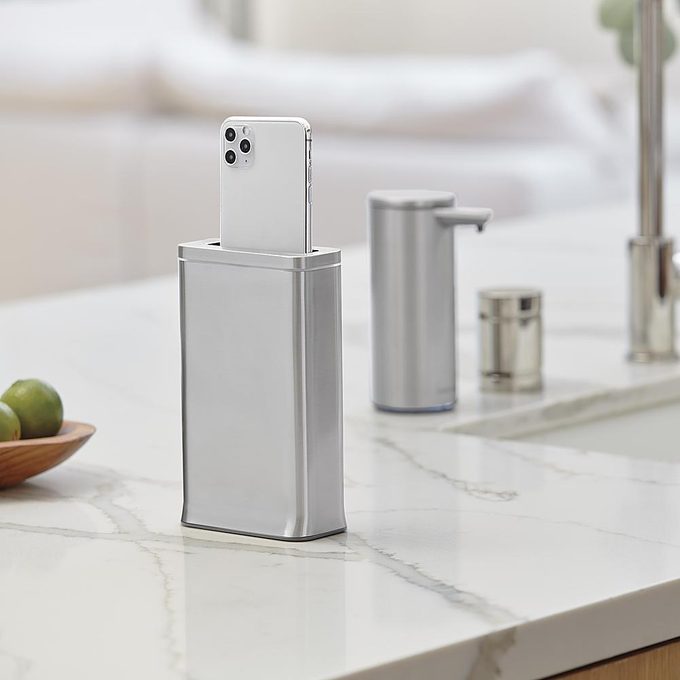
Shoppers who care more about convenience than cost will want to consider this super simple device. “Although it’s pricey, I think Simplehuman Cleanstation is the best choice for most people,” says Steven Winkelman, a mobile analyst with PCMag. In addition to cleaning your phone in just 30 seconds, the Cleanstation automatically raises and lowers your device while it sanitizes, reducing the likelihood that you might touch the phone and pass on germs. You’ll eventually want to wipe down the exterior of this sanitizer, so be sure you know how to clean stainless steel.

Weighing less than a pound and not much bigger than a smartphone, Mophie’s UV phone sanitizer is perfect for slipping in a bag or suitcase while on the go, says McConomy. This phone sanitizer uses UV-C bulbs to zap germs, and the charger on top of the lid can give your phone’s battery a boost—no need to plug a cord into the charging port.
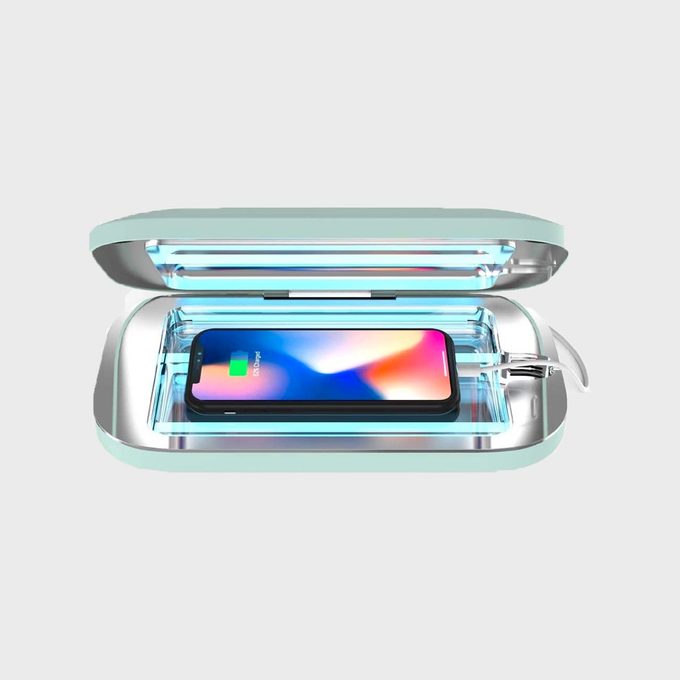
Winkelman recommends the PhoneSoap Pro for people who want an effective phone sanitizer at a reasonable price. With four UV-C LED bulbs and a vacuum-plated aluminum inner shell, the device ensures that every inch of your phone is sanitized. It kills 99.99 percent of bacteria in five minutes and fits the largest of smartphones. PhoneSoap’s technology is also trusted by medical professionals, who use the company’s UV disinfection device ExpressPro in hospitals, according to Winkelman. While the phone sanitizer is doing the work for you, make use of your time by starting your next project: cleaning your dishwasher.
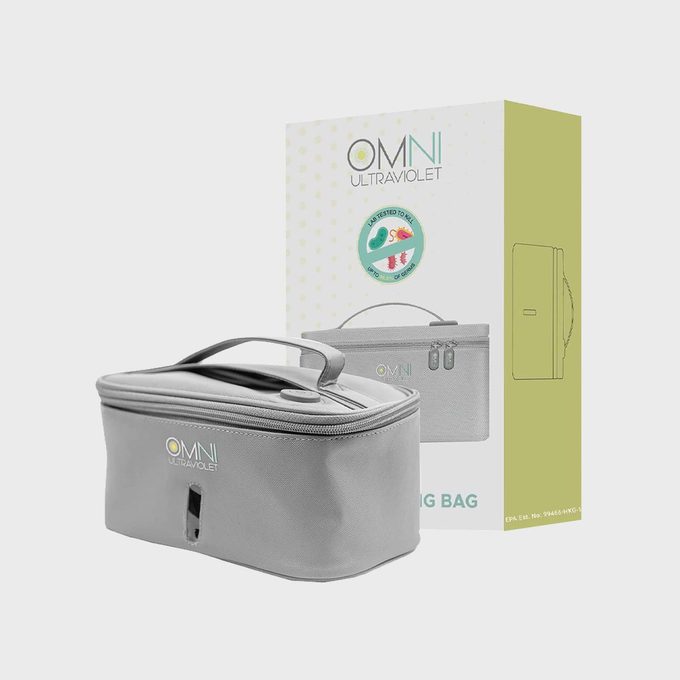
For people who are always on the go, Omni Ultraviolet’s sanitizing bag does double duty. This two-in-one phone sanitizer cleans your phone while also toting small items, such as your wallet, makeup and cash, according to McConomy. An independent lab found the product was 99.99 percent effective at killing germs like salmonella and E. coli. And as an added bonus, every purchase comes with a UV-C test strip so you can confirm the sanitizer uses real UV-C light, not a black light. Next up on the cleaning list? It’s about time you cleaned your coffee maker.
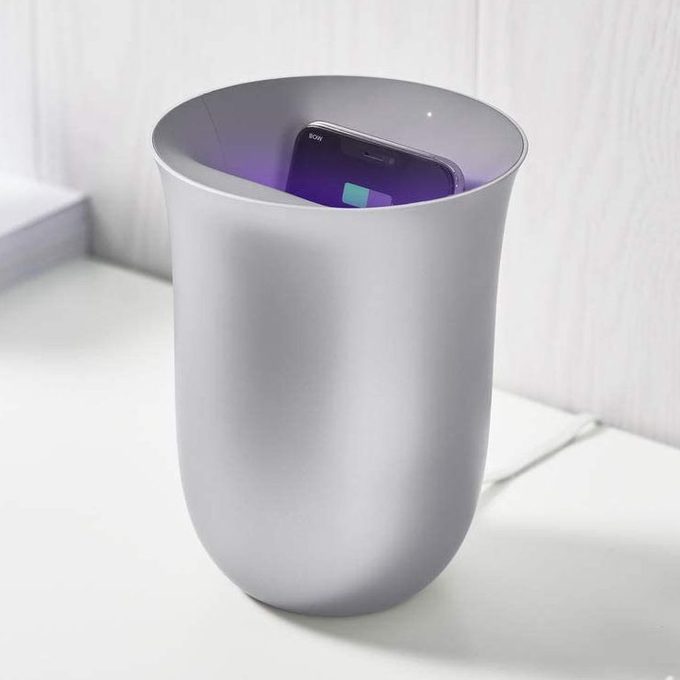
If you want a phone sanitizer that elevates your home decor, look no further than the Lexon Oblio. It comes in colors like gold, matte black, white and navy blue and can be a tasteful addition to any shelf or bookcase. “This UV-C sanitizer and wireless charger has a luxury feel to it,” says McConomy. “It will fit in with your home decor perfectly, as it has a vase-like or ornamental appearance.” Just as sanitizing your phone is easier than you might think, cleaning your oven is a simpler task than you’re imagining. (Yes, really!)

On a budget? Consider the UV-Zone phone sanitizer, which costs less than $15. “With such a low price, this is the ideal UV sanitizer if you don’t want to break the bank,” reveals McConomy. This product charges your phone wirelessly while it sanitizes, making it a staple for your home, office or hotel room. It’s certainly quicker and more convenient than cleaning your TV or laptop screen.
If you’re looking to purchase a UV light phone sanitizer, Winkelman suggests choosing one from a trusted brand or a company that provides shoppers with results from a reputable lab that prove the product’s effectiveness. Consider the device’s portability and ease of use, too. “It shouldn’t be much bigger than the phone itself, should be easy to carry and would preferably run off an internal battery so you can sanitize wherever you are,” says McConomy.
I am a tech and consumer products writer with nearly 10 years of experience covering the latest digital trends, product reviews and security and privacy issues for Reader’s Digest. I have written more than 25 tech and cybersecurity stories for the publication, and my work has also appeared in U.S. News & World Report, D Magazine and the Arkansas Times. As a two-time Emmy-nominated reporter, I bring a rigorous, investigative approach to my writing, ensuring you get the most reliable and insightful information.
We interviewed two experts for this article to provide additional insights into the best phone sanitizers. Sarah McConomy, the Chief Operating Officer of SellCell.com, boasts extensive knowledge of mobile device trends and consumer electronics. Steve Winkelman, a mobile analyst at PCMag, shares his expertise in evaluating and reviewing the latest mobile technology and accessories (he’s reviewed over 100 phones and tablets!).
To identify the best phone sanitizers, we conducted extensive research and consulted with two tech experts for their insights on the latest sanitizing technologies. We examined various models, considering factors like effectiveness, ease of use and portability. Additionally, we reviewed customer feedback to understand real-world performance and consulted research papers to verify the efficacy of different sanitizing methods.
While some experts are skeptical, a handful of studies have found that UV light can effectively kill common illnesses, such as MRSA and certain types of coronaviruses. In fact, according to the National Academies of Sciences, Engineering, and Medicine, UV-C light has been shown in laboratory experiments to inactivate the COVID-19 virus. And many hospitals, including the network at Duke University, have used UV disinfection for years.
There is, in fact, a difference between sanitizing and disinfecting. “UV sanitizers do not disinfect; they sanitize, which means they reduce the number of germs on a surface,” says Winkelman. In other words, a UV phone sanitizer should not replace basic cleaning measures, like regular handwashing and surface sanitization.
Sources: